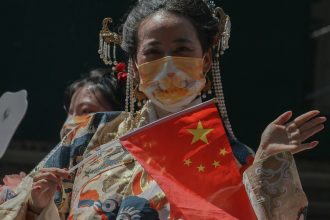Addressing Unmet Needs in India’s Digital Landscape: Opportunities Beyond Global Social Media Platforms
In a recent Independence Day address, Indian Prime Minister Narendra Modi emphasized the importance of fostering indigenous digital innovation. He urged Indian entrepreneurs and technologists to develop homegrown social media platforms that resonate with the country’s unique cultural, social, and linguistic diversity, rather than relying solely on international giants like Facebook or Instagram.
The dominance of global social media applications is undeniable. These platforms have built extensive user bases worldwide, often leading to “copycat” versions that merely replicate existing features without substantial adaptation. However, the question remains: what essential needs or practices within India are currently underserved or overlooked by these global entities?
Understanding and Addressing Local Needs
India’s vast population presents a mosaic of regional languages, traditions, and social customs. While global platforms have attempted to localize content, their approaches often lack depth or fidelity to authentic cultural practices. For instance, a social media app tailored specifically to regional languages could facilitate more meaningful connections among users who prefer local dialects over mainstream languages. Similarly, platforms that prioritize privacy, data sovereignty, and adherence to Indian regulations could resonate more deeply with users seeking greater control over their digital footprints.
Moreover, India’s social fabric includes community-centric interactions, rural connectivity challenges, and a burgeoning number of local content creators. An Indian-first social media platform that emphasizes community engagement, supports regional content creators, or caters to rural users with limited internet infrastructure could bridge significant gaps left by global apps.
What Could an Indian-First Social Platform Achieve?
A platform designed with India’s unique social and cultural context in mind could foster a more inclusive and representative digital space. For example:
-
Enhanced Multilingual Support: Building interfaces and content dissemination tools that comfortably accommodate India’s 22 officially recognized languages.
-
Localized Content Curation: Promoting content that reflects regional cultures, festivals, and traditions, thereby strengthening cultural identity.
-
Rural Connectivity Initiatives: Developing lightweight applications optimized for low-bandwidth environments, enabling broader access.
-
Data Sovereignty and Privacy: Ensuring user data remains within Indian jurisdiction, addressing concerns around data privacy and security.
-
Community-Centric Features: Creating tools that facilitate local events, social discussions, and community initiatives.
In essence, India’s vibrant and diverse society offers a wealth of opportunities for innovative social media solutions that are better aligned with local needs. Moving beyond mere replication of global apps, the focus should be on crafting platforms that empower users, preserve









